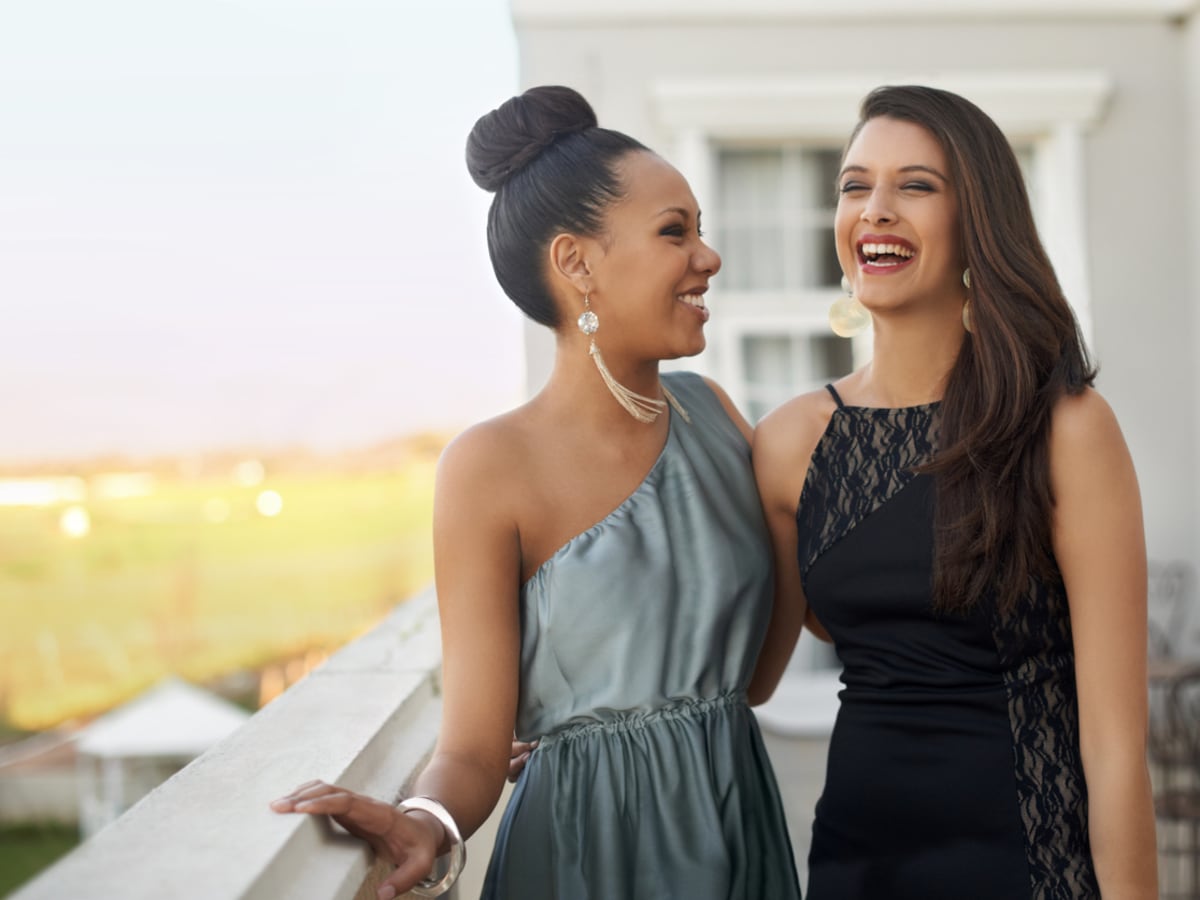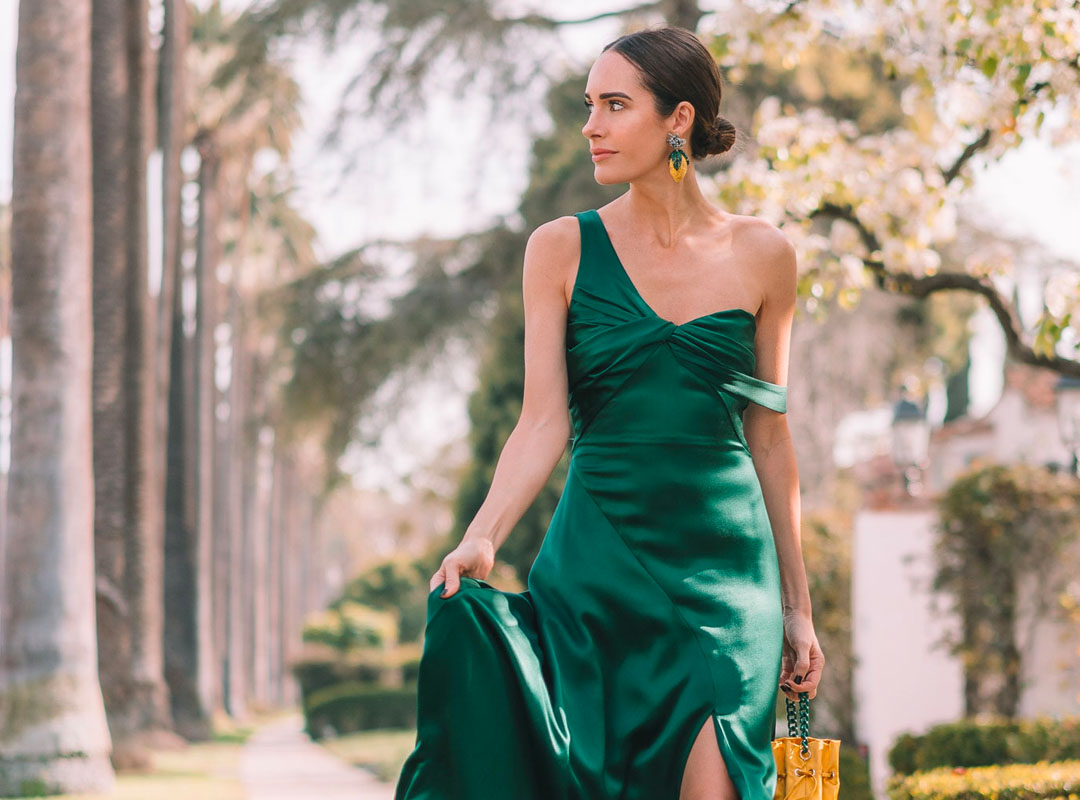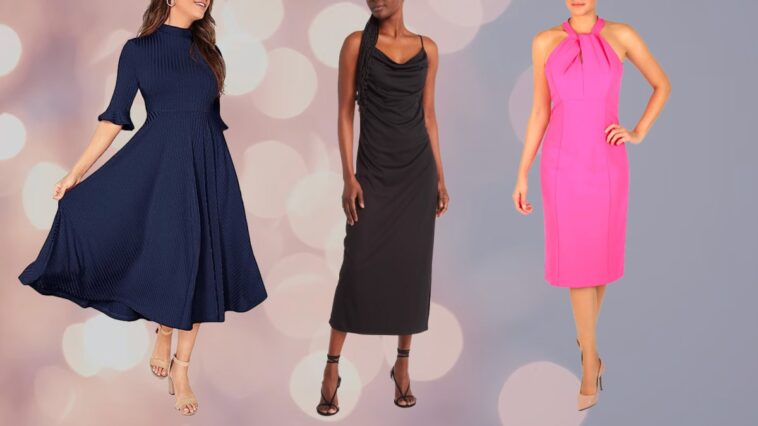Dress codes can be confusing, with terms like business casual and cocktail attire leaving ample room for interpretation. The key is first understanding the formality level of the event. Black tie is most formal, requiring tuxedos and evening gowns. Business attire means suits and professional dresses. Business casual allows for dressier separates. Casual is everyday wear.
Beyond formality, consider the venue, time of day, season, and host instructions. When in doubt, opt for classics over trends. The goal is to look polished and put together while respecting the dress code. With this information, you can know what to purchase from Alex Evenings for different occasions.
Casual Dress

A casual dress code is a more relaxed style of dressing for work or school that does not require formal business attire. It emerged as a popular alternative to strict dress codes in many workplaces in the 1990s. The key aspects of casual workplace attire are comfort, practicality, and a put-together appearance.
The main aim for men is to look professional while remaining comfortable. Collared shirts with neutral colors or simple patterns are preferable to graphic tees. These can be paired with khakis, casual slacks, chinos, or nice-looking jeans. However, pants should not be overly wrinkled or distressed. While polo shirts and khakis are common, throwing on a sports coat can also elevate the look. The overall effect should express care and polish rather than looking sloppy. Shoes may include loafers, leather sneakers, boots, or dressy casual shoes. Women’s casual office wear may comprise blouses, sweaters, skirts, dresses, cropped pants, or dark jeans paired with flats, low heels, or ankle boots.
The advantages of casual dress are increased comfort, the ability to express personal style, and the promotion of an egalitarian work culture rather than adherence to hierarchy through formal suits. Potential drawbacks include ambiguity around what constitutes appropriate attire and maintaining professionalism.
Though casual dress is designed for comfort, employees should still exhibit good grooming and hygiene and avoid clothes that are overly revealing, torn, or have words/images that may be offensive. Moderation in accessories and jewelry is also advised. While casual dress offers more flexibility, employees should use sound judgment to dress in a polished manner that aligns with company policy. With some awareness and common sense, a casual dress code can increase morale and productivity in the modern workplace.
Cocktail Attire

Cocktail attire refers to a semi-formal style of dress that is appropriate for cocktail parties and other evening events that do not call for full formal wear. For men, cocktail attire typically consists of a suit, dress shirt, and tie. The suit can be two-piece or three-piece, and darker colors like charcoal gray, navy, or black are recommended. Shirt colors should complement the suit, such as light blue or white, and ties can add a pop of color or an interesting pattern. The key is to appear pulled together but not overdressed. Men’s shoes should be leather dress shoes in black or brown, paired with dark socks. Optional accessories include a vest, pocket square, stylish watch, or cufflinks.
For women, cocktail dresses are the central element. Dresses should fall around knee-length or slightly longer or shorter. They can be sleeveless, have short sleeves, or strapped shoulders. Solid colors, prints, and lace details are all appropriate options. High heels or dressy flats complement most dresses. Hair and makeup are more glamorous than daytime looks with bolder lips or an updo. Metallic shoes, clutches, and statement jewelry pieces add interest. A cocktail dress can be paired with a blazer or dress coat for a more business-forward option.
The key for both genders is looking dressed up but not in full formal attire. Cocktail attire hits the sweet spot of feeling celebratory and special for a night out while still being approachable and versatile. With the right mix of pieces, cocktail attire can be flattering, sophisticated, and fun.
Black Tie
Black tie attire elicits images of refined elegance and sophistication. The classic black tie dress code is reserved for formal evening affairs ranging from upscale galas to weddings. For gentlemen, it necessitates suits trimmed in satin, such as single-breasted black tuxedo jackets paired with matching pants featuring satin stripes. Ladies don floor-length gowns swishing through candlelit ballrooms. With roots tracing back to 19th-century high-society soirees, donning black tie garb carries a sense of timeless tradition and decorum. While allowing for some modern twists, the rules of black tie attire uphold a standard of refinement befitting the grandest of occasions.
For women, full-length evening gowns are appropriate black tie attire. Silhouettes can vary from sleek, column shapes to full ballgowns. Fabrics like chiffon, satin, and velvet work well. Both solid colors and prints are suitable, in shades like black, midnight blue, deep red, or purple. Accessories like a clutch, statement jewelry, and strappy heels pull the look together. Hair can be worn up or down. Bold lips and smoky eyes complete the glamorous aesthetic.
The most important guideline is that black tie attire should look formal and elegant. Sticking to dark, rich colors and fabrics, minimal patterns, and formal silhouettes creates a polished, sophisticated look for black tie events. While men’s attire is more tightly defined, women have more flexibility to balance traditional evening wear with personal style.

White Tie
White tie is the most formal evening dress code. For men, white tie attire consists of a black tailcoat, white pique waistcoat, and white bow tie. The shirt has a stiff front bib and is fastened with studs instead of buttons. Shirt studs and cufflinks should be mother-of-pearl or a similar iridescent material. The tailcoat is traditionally double-breasted with peak lapels, though single-breasted is also acceptable. The trousers have black satin stripes down the leg. The shoes are black patent leather pumps with grosgrain bows. White gloves are optional.
For women, full-length ball gowns are required. Fabrics are typically luxurious like satin, velvet, or chiffon in rich colors or metallics. Jewelry is understated, focusing on diamonds and pearls. Hair is worn up and makeup is elegant. The overall look is formal, timeless elegance. White-tie events include state dinners, private balls, and opening nights at the opera. Proper white tie etiquette is required to meet the strict dress code.
Dress codes can often be confusing, with vague guidelines open to interpretation. The key is understanding the context. Consider the event, time of day, venue, and host’s preferences. Do research beforehand if needed to clarify expectations. Ultimately, choose an outfit that makes you feel confident and appropriate. Dress codes exist to set a tone, not to police. Focus on expressing yourself stylishly within the spirit of the code. With care and consideration, you can assemble an ensemble perfect for the occasion that suits your style.




